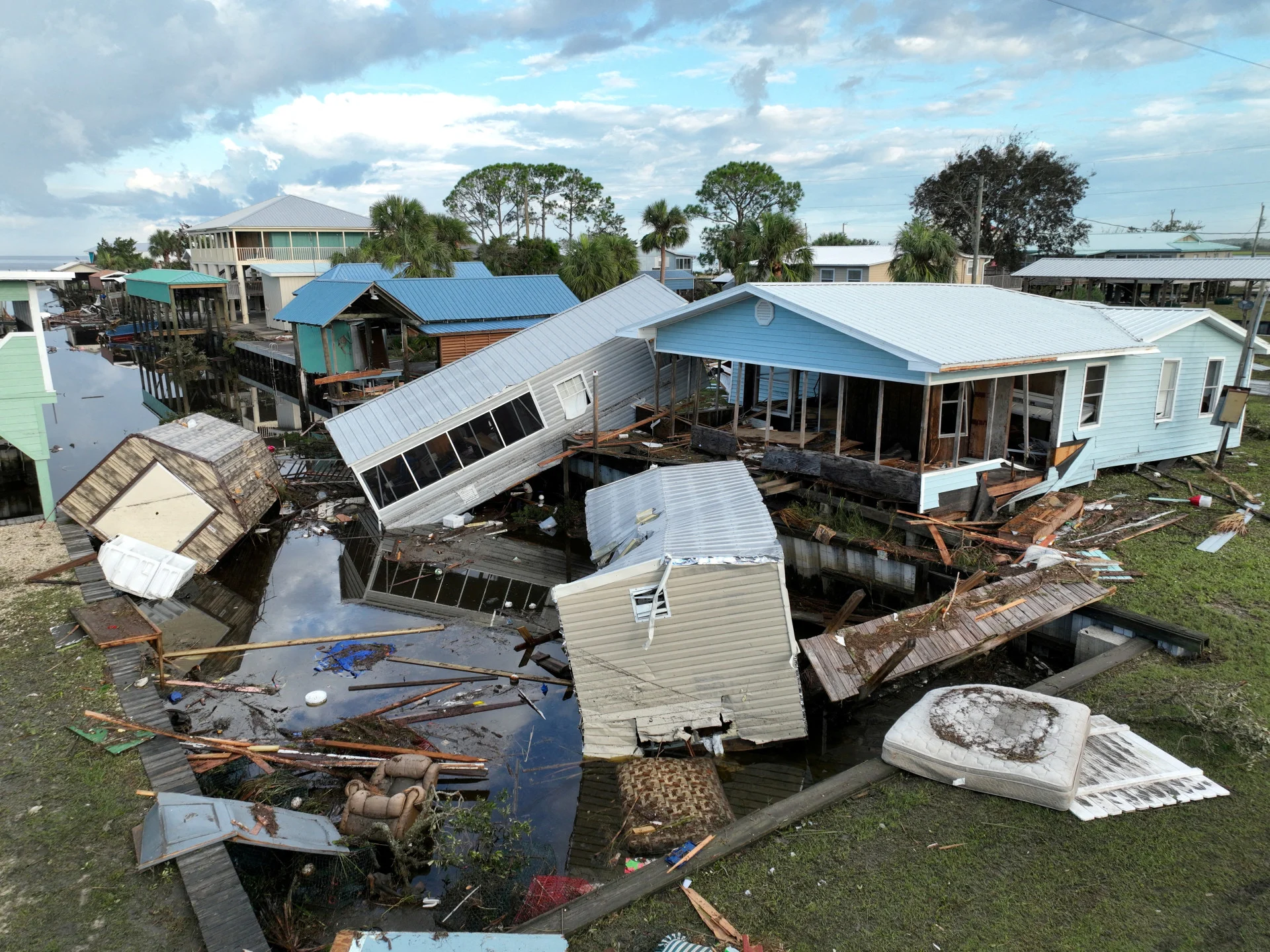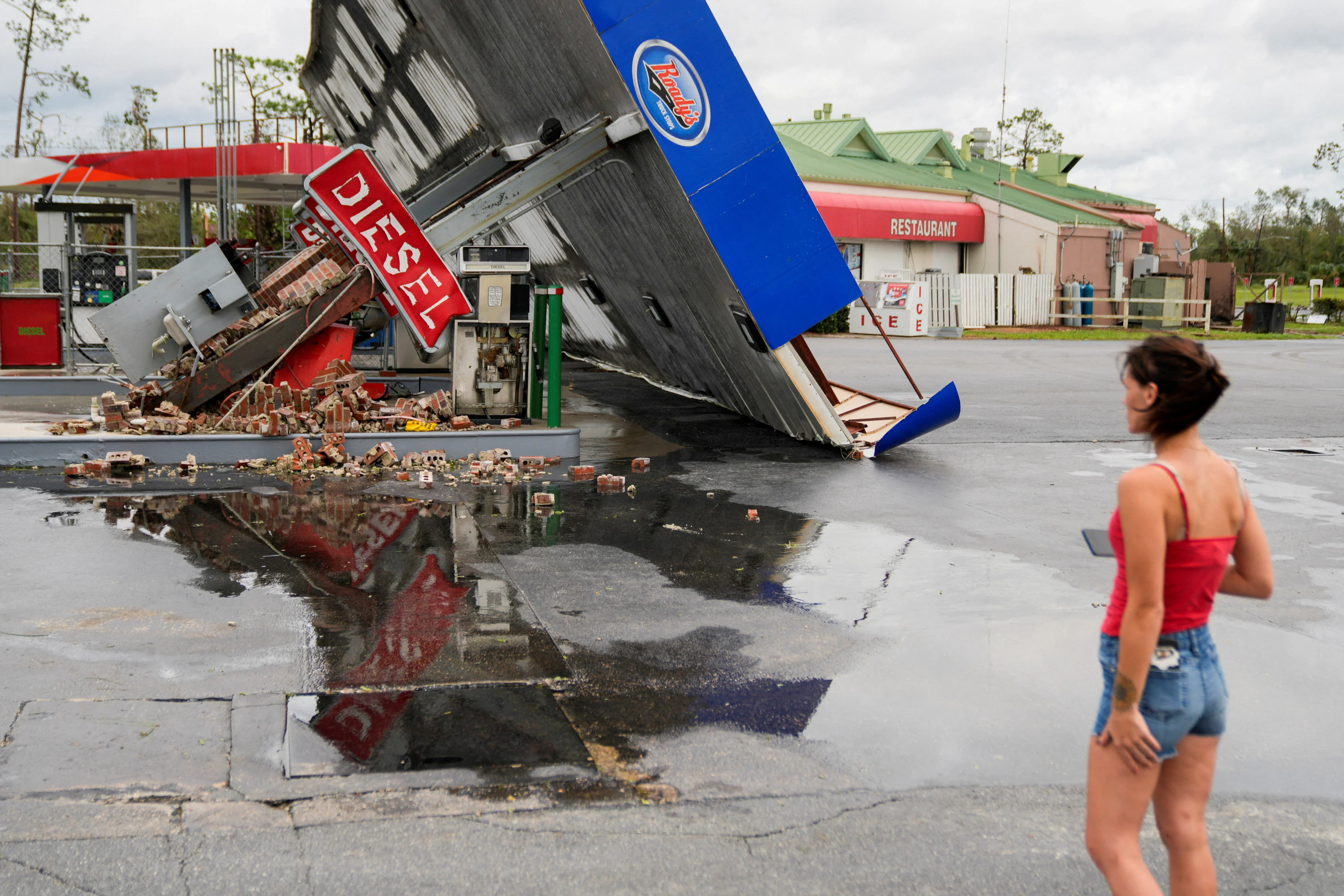
As US hits record of costly climate disasters, Red Cross plans $1bn effort
By Andy Sullivan and Valerie Volcovici
WASHINGTON (Reuters) - As the U.S. hits a new record of billion dollar weather disasters this year, the Red Cross disaster relief agency is launching a $1 billion response effort as these events are expected to increase due to climate change.
This year has seen a record 23 disasters that have each done more than $1 billion in damages, according to the U.S. National Oceanographic and Atmospheric Administration. That is already more than 2020's count of 22 billion-dollar disasters, with four months left to go.
"We don't have a break anymore," said Trevor Riggen, head of humanitarian services at the American Red Cross. Riggen said the country is now on pace for a billion dollar disaster nearly every week. "It is constant."
Visit The Weather Network's hurricane hub to keep up with the latest on tropical developments in Canada and around the world
Damages reported from this year's 23 disasters so far have cost $57.9 billion - not including the costs from last month's Hurricane Idalia. Currently, 2023 is on pace to be the seventh most expensive year since 1980, according to a Reuters analysis of NOAA figures.
But that figure is certain to rise, with the costliest disasters tending to hit during the North Atlantic hurricane season ending Nov. 30. Meanwhile, the agency could soon be adding two more events – last month’s Hurricane Hilary in California and the ongoing Midwestern drought – but has yet to finish tallying those damages.
That frequency is challenging the way the Red Cross operates, Riggen told Reuters. As of this week, the Red Cross has 2,000 volunteers deployed after the deadly fires in Hawaii and storm devastation in Florida and other southern U.S. states.
WATCH: Idalia declared region's strongest hurricane in 125 years
SEE ALSO: Fiona versus Lee: How powerful but different these hurricanes are
While the Red Cross has treated past disasters on a case-by-case basis, it now will be coordinating operations year-round along with local and regional organizations, he said. The increased funding will also allow the agency to add 69 new staff members, including a new leadership team to coordinate efforts across the country.
The Red Cross received funding from the Lilly Endowment and other philanthropies for the new $1 billion climate strategy and continues to raise money from donations.

View of a damaged property after the arrival of Hurricane Idalia in Horseshoe Beach, Florida, U.S., August 31, 2023. (REUTERS/Julio Cesar Chavez/File Photo)
Earlier this month, the White House said it would be asking lawmakers to boost disaster relief funding to $16 billion from $12 billion.
As both global emissions and temperatures continue to climb, experts are bracing for increasing catastrophe. Higher temperatures are drying out both farmlands and forests, which can lead to bigger wildfires in the U.S. West. Increasingly erratic rainfall patterns and storms, meanwhile, are causing flooding events in the U.S. East.
"A lot of these trends are going in the wrong direction for us," NOAA climatologist Adam Smith said.
WATCH: New study tracks climate change's major public health impacts
LIVING AT RISK
Beyond the dollar damages, this year's disasters have also been deadly.
NOAA's billion-dollar disaster report counts 253 people killed in the 23 tallied events, which do not include events that might also have been deadly but cost less than $1 billion in damages.
One of the biggest risk factors is the fact that people are still crowding into areas along coastlines where hurricanes hit or near forests that can burn.
"The value of real estate along the coast in particular has been rising as people continue to build new infrastructure and buildings in high-risk areas," said University of Arizona climate scientist Katharine Jacobs. That is courting trouble, given that "the intensity and frequency of severe events is increasing due to climate change."
Outdated building codes set before climate change began altering weather can also increase risk in some areas.
"We have buildings that were built for the extremes of the past, not those we are experiencing now," said energy and environment fellow Alice Hill at the Council on Foreign Relations.
For the Red Cross, the escalation has been intense. Last year, the agency responded to 354 disasters, a 4% increase from 2021. Each deployment costs the agency at least $10,000, though last year included 26 that needed $250,000 or more.

View of a damaged property after the arrival of Hurricane Idalia in Horseshoe Beach, Florida, U.S., August 31, 2023. (REUTERS/Julio Cesar Chavez/File Photo)
Riggen, who has worked for the agency since Hurricane Katrina devastated Louisiana 18 years ago, recalled preparing for so-called disaster seasons: hurricanes in late summer, tornados in spring, a few floods in early summer – and reliable moments of reprieve in the fall and early winter.
"There would be these breaks between these types of events that you could rebuild capacity, rebuild the energy of volunteers," Riggen said.
With the funding boost, the Red Cross plans to focus on helping vulnerable populations in the face of climate-fueled disasters, he said, including direct financial assistance to families in need and support for local organizations in affected states.
(This story has been refiled to make minor edits throughout and remove paragraph 7)
(Reporting by Valerie Volcovici and Andy Sullivan; additional reporting by Nathan Frandino in Oakland, California; Editing by Katy Daigle and Josie Kao)











